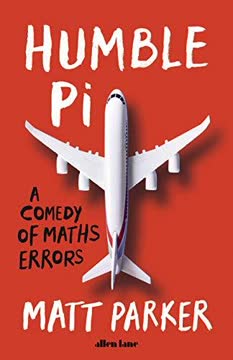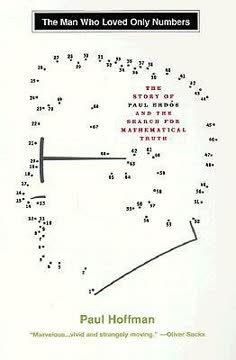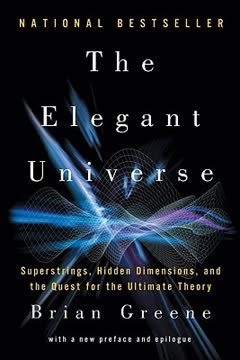نکات کلیدی
1. تقارن: زبان جهانی طبیعت و هنر
"تقارن ابزار اصلی برای پل زدن بین علم و هنر، بین روانشناسی و ریاضیات است."
تقارن در طبیعت و هنر. تقارن یک مفهوم فراگیر است که از ریاضیات تا هنر، از زیستشناسی تا فیزیک را در بر میگیرد. در طبیعت، این مفهوم در تقارن دوطرفه حیوانات، تقارن چرخشی برفدانهها و تقارن انتقالی ساختارهای بلوری تجلی مییابد. در هنر، تقارن در طول تاریخ برای ایجاد ترکیبهای زیبا به کار رفته است، از معماری یونان باستان تا نقاشیهای رنسانس.
انواع تقارن. چندین نوع تقارن وجود دارد:
- تقارن بازتابی (تقارن آینهای)
- تقارن چرخشی
- تقارن انتقالی
- تقارن لغزشی
اهمیت در زمینههای مختلف. تقارن نقش حیاتی در زمینههای زیر ایفا میکند:
- فیزیک: قوانین بنیادی و تعاملات ذرات
- زیستشناسی: توسعه و تکامل موجودات
- روانشناسی: ادراک انسانی و ترجیحات زیباییشناختی
- ریاضیات: نظریه گروهها و جبر انتزاعی
- هنر و معماری: اصول طراحی و ترکیب
2. نظریه گروه: چارچوب ریاضی برای تقارن
"نظریه گروه به عنوان زبان 'رسمی' تمام تقارنها شناخته شد."
تعریف و ویژگیها. نظریه گروه شاخهای از ریاضیات است که به مطالعه ساختارهای جبرانی به نام گروهها میپردازد. یک گروه مجموعهای از عناصر است که با یک عمل، هر دو عنصر را ترکیب کرده و یک عنصر سوم تشکیل میدهد و چهار ویژگی کلیدی را برآورده میکند:
- بسته بودن
- همجمعی
- عنصر هویت
- عنصر معکوس
کاربردها در تقارن. نظریه گروه چارچوبی قدرتمند برای توصیف و تحلیل تقارنها در زمینههای مختلف فراهم میکند:
- بلورشناسی: 230 گروه فضایی توصیفکننده ساختارهای بلوری
- فیزیک ذرات: طبقهبندی ذرات بنیادی
- مکانیک کوانتومی: نمایش تقارنها در سیستمهای فیزیکی
- شیمی: تقارن مولکولی و طیفسنجی
توسعه تاریخی. مفهوم گروهها از مطالعه معادلات جبرانی به وجود آمد، بهویژه از طریق کار اواستی گالوآ در اوایل قرن نوزدهم. از آن زمان، این مفهوم به ابزاری بنیادی در ریاضیات و فیزیک برای درک تقارن و ساختار تبدیل شده است.
3. معادله حلناپذیر: از گالوآ تا فیزیک مدرن
"اختراع گروهها توسط گالوآ یک نبوغ بود."
معادله پنجمی. برای قرنها، ریاضیدانان به دنبال فرمول عمومی برای حل معادلات چندجملهای از درجه پنج یا بالاتر (معادلات پنجمی) بودند. این جستجو منجر به پیشرفتهای قابل توجهی در جبر و نظریه گروهها شد.
شکست گالوآ. اواستی گالوآ، ریاضیدان جوان فرانسوی، ثابت کرد که هیچ فرمول عمومی برای معادلات پنجمی وجود ندارد. کار او مفهوم گروهها را معرفی کرده و پایهگذار جبر مدرن شد.
مشارکتهای کلیدی:
- اثبات غیرممکن بودن حل معادله عمومی پنجمی با رادیکالها
- معرفی مفهوم نظریه گروه
- توسعه نظریه گالوآ، پیوند نظریه گروه با نظریه میدان
- ایجاد ارتباط بین تقارن و قابلیت حل معادلات
تأثیر بر فیزیک مدرن. کار گالوآ در نظریه گروه و تقارن تأثیرات عمیقی در فیزیک داشته است:
- فیزیک ذرات: طبقهبندی ذرات بنیادی
- مکانیک کوانتومی: گروههای تقارن در سیستمهای کوانتومی
- نظریه رشته: اصول تقارن در نظریههای یکپارچه
4. تقارن در فیزیک: از انیشتین تا نظریه رشته
"تقارن به منبع نیروها تبدیل شده است."
نسبت انیشتین. نظریههای نسبیت خاص و عمومی آلبرت انیشتین تقارنهای بنیادی را در فیزیک معرفی کردند:
- نسبیت خاص: تقارن بین فضا و زمان
- نسبیت عمومی: تقارن تحت تمام تبدیلهای مختصاتی (همگنسازی عمومی)
مکانیک کوانتومی و تقارن. اصول تقارن نقش حیاتی در مکانیک کوانتومی ایفا میکنند:
- قوانین حفظ: مرتبط با تقارنها از طریق نظریه نتر
- فیزیک ذرات: طبقهبندی ذرات بر اساس گروههای تقارن
مدل استاندارد و فراتر. مدل استاندارد فیزیک ذرات بر اصول تقارن بنا شده است:
- تقارنهای گاج: توصیف نیروهای بنیادی (الکترومغناطیسی، ضعیف، قوی)
- فوقتقارن: تقارن پیشنهادی بین فرمیونها و بوزونها
نظریه رشته. تقارن همچنان به توسعه نظریههای یکپارچه هدایت میکند:
- ابعاد اضافی: تقارنها در فضاهای با ابعاد بالاتر
- دوگانگیها: تقارنها بین نظریههای ظاهراً متفاوت
5. نقش تقارن در تکامل بیولوژیکی و انتخاب همسر
"تقارن نمیتواند جعل شود."
اهمیت تکاملی. تقارن نقش حیاتی در تکامل بیولوژیکی ایفا میکند:
- تقارن دوطرفه: مزیت تطبیقی در حرکت و ادراک
- عدم تقارن نوسانی: نشاندهنده ثبات توسعه و کیفیت ژنتیکی
انتخاب همسر. تقارن عامل مهمی در انتخاب جنسی در گونههای مختلف است:
- دم طاووس: نمونهای از زینت تقارنی به عنوان نشاندهنده تناسب
- تقارن صورت انسان: مرتبط با جذابیت ادراک شده
نشاندهندههای تناسب. تقارن به عنوان نشاندهنده قابل اعتمادی برای تناسب به چند دلیل عمل میکند:
- دشواری جعل: نشاندهنده ثبات واقعی توسعه
- سیگنال صادق: زینتهای پرهزینه نشاندهنده کیفیت ژنتیکی
- ترجیح جهانی: سازگار با فرهنگها و گونههای مختلف
ترجیحات انسانی. مطالعات نشان دادهاند که انسانها ویژگیهای تقارنی را در همسران بالقوه ترجیح میدهند:
- تقارن صورت: مرتبط با جذابیت و سلامت
- تقارن بدن: همبستگی با نشاندهندههای مختلف تناسب
- ترجیحات بویایی: مرتبط با تقارن بدن در برخی مطالعات
6. تمایل ذاتی مغز انسان به تقارن
"تقارن یکی از عناصر کلیدی است که به طور قابل توجهی به 'خوبی' شکل کمک میکند."
روانشناسی تکاملی. تمایل انسان به تقارن ممکن است به دلایل مختلفی تکامل یافته باشد:
- شناسایی شکارچی: تقارن دوطرفه به عنوان نشانهای برای تهدیدات بالقوه
- انتخاب همسر: تقارن به عنوان نشاندهنده کیفیت ژنتیکی
- شناسایی اشیاء: اشیاء تقارنی آسانتر شناسایی و به خاطر سپرده میشوند
سازمان ادراکی. اصول روانشناسی گشتالت اهمیت تقارن را در ادراک بصری نشان میدهند:
- تفکیک شکل-زمینه: نواحی تقارنی به طور معمول به عنوان شکلها درک میشوند
- گروهبندی: عناصر تقارنی تمایل به گروهبندی دارند
- اصل "شکل خوب": تقارن به "خوبی" ادراکی کمک میکند
پایههای عصبی. مطالعات تصویربرداری مغزی نواحی خاصی را شناسایی کردهاند که در ادراک تقارن دخیل هستند:
- لوب اکسیپیتال: ناحیهای که با الگوهای تقارنی فعال میشود
- آمیگدالا: در پاسخهای احساسی به تقارن دخیل است
تأثیرات فرهنگی. در حالی که تمایل به تقارن به نظر میرسد ذاتی باشد، عوامل فرهنگی میتوانند بیان آن را تعدیل کنند:
- سنتهای هنری: تأکید متفاوت بر تقارن در فرهنگهای مختلف
- ایدههای زیباییشناختی: تفاوتهای فرهنگی در قدردانی از تقارن
7. تقارن به عنوان یک مفهوم بنیادی: محدودیتها و جهتگیریهای آینده
"ما هنوز نمیدانیم که آیا تقارن به عنوان بنیادیترین مفهوم در کارکردهای جهان شناخته خواهد شد یا خیر."
وضعیت کنونی. تقارن به عنوان یک مفهوم بسیار قدرتمند در فیزیک و ریاضیات ثابت شده است:
- پیشبینیهای موفق: بسیاری از نظریههای مبتنی بر تقارن به طور تجربی تأیید شدهاند
- اصل وحدتبخش: تقارن پدیدههای متنوع را در زمینههای مختلف پیوند میدهد
- زیباییشناسی ریاضی: نظریه گروه چارچوبی دقیق برای تقارن فراهم میکند
محدودیتها و چالشها. برخی محدودیتهای بالقوه برای ماهیت بنیادی تقارن وجود دارد:
- شکست تقارن: بسیاری از پدیدههای مشاهده شده شامل تقارنهای شکسته هستند
- تقارنهای تقریبی: برخی از تقارنها در فیزیک تنها تقریبی هستند
- اثرات انتخاب: تمایل ما به تقارن ممکن است نظریههای ما را تحت تأثیر قرار دهد
جهتگیریهای آینده. نقش تقارن در فیزیک بنیادی همچنان یک حوزه فعال تحقیق است:
- نظریه رشته: جستجوی اصول زیرین فراتر از تقارنهای شناخته شده
- گرانش کوانتومی: آشتی دادن تقارنهای نسبیت عمومی و مکانیک کوانتومی
- ظهور: بررسی اینکه آیا تقارنها ویژگیهای بنیادی یا پدیداری هستند
ملاحظات فلسفی. وضعیت تقارن سؤالات فلسفی مهمی را مطرح میکند:
- هستیشناسی: آیا تقارن ویژگیای از طبیعت است یا یک ساختار انسانی؟
- معرفتشناسی: چگونه میدانیم که آیا نظریههای مبتنی بر تقارن ما واقعیت را منعکس میکنند؟
- روششناسی: آیا باید اصول تقارن را در توسعه نظریهها در اولویت قرار دهیم؟
آخرین بهروزرسانی::
FAQ
1. What is The Equation That Couldn't Be Solved by Mario Livio about?
- Exploration of symmetry: The book investigates the concept of symmetry, its mathematical language, and its influence across art, science, and nature.
- Historical narrative: It traces the quest to solve polynomial equations, focusing on the lives and discoveries of mathematicians like Evariste Galois and Niels Henrik Abel.
- Human side of mathematics: Livio highlights the personal struggles, passions, and tragedies of mathematical geniuses, making abstract concepts relatable.
- Impact on modern science: The narrative connects the development of group theory to foundational advances in physics, biology, and the arts.
2. Why should I read The Equation That Couldn't Be Solved by Mario Livio?
- Interdisciplinary insight: The book reveals how symmetry links diverse fields such as mathematics, art, music, and physics, enriching your understanding of the world.
- Compelling biographies: It humanizes mathematical geniuses, offering inspiring stories of creativity, adversity, and perseverance.
- Accessible mathematics: Livio makes complex ideas like group theory and Galois theory understandable for non-specialists.
- Foundations of modern thought: Readers gain appreciation for the origins of group theory and its profound impact on science and culture.
3. What are the key takeaways from The Equation That Couldn't Be Solved by Mario Livio?
- Symmetry’s universality: Symmetry is a fundamental principle underlying beauty, perception, and the laws of nature.
- Birth of group theory: The quest to solve the quintic equation led to the creation of group theory, revolutionizing mathematics.
- Human element in discovery: The book emphasizes the emotional and social challenges faced by geniuses like Galois and Abel.
- Symmetry’s role in science: Group theory and symmetry are central to modern physics, biology, and even music and art.
4. What is symmetry according to The Equation That Couldn't Be Solved by Mario Livio?
- Ancient and modern definitions: Symmetry originally meant "the same measure" and now refers to "immunity to a possible change," where an object remains unchanged after a transformation.
- Types of symmetry: The book discusses mirror, rotational, translational, glide reflection, and screw symmetries, with examples from nature and art.
- Perception and aesthetics: Symmetry is crucial in how humans perceive beauty and organize visual information, influencing art, music, and even mate selection.
5. How does The Equation That Couldn't Be Solved by Mario Livio explain group theory and its importance?
- Language of symmetry: Group theory is introduced as the mathematical framework for describing and analyzing symmetries.
- Definition and properties: A group is a set with an operation satisfying closure, associativity, identity, and invertibility, allowing for the study of symmetry in various contexts.
- Applications: Group theory explains the structure of algebraic equations, physical laws, and even musical scales, unifying diverse phenomena under a single concept.
- Foundation for modern science: The development of group theory paved the way for advances in physics, chemistry, and other sciences.
6. What is Galois theory, and how does The Equation That Couldn't Be Solved by Mario Livio describe it?
- Linking equations and symmetry: Galois theory connects polynomial equations to groups (Galois groups) that encode the symmetries of their solutions.
- Solvability criterion: The structure of the Galois group determines whether an equation can be solved by radicals, providing a definitive answer to the solvability problem.
- Revolution in algebra: Galois theory shifted the focus from finding formulas to understanding the underlying symmetry, marking the birth of abstract algebra.
- Impact on mathematics: This theory is now central to algebra and has influenced many other fields.
7. Who were Evariste Galois and Niels Henrik Abel, and why are they important in The Equation That Couldn't Be Solved by Mario Livio?
- Abel’s achievements: Abel proved the general quintic equation cannot be solved by radicals, laying the groundwork for modern algebra despite dying young and in poverty.
- Galois’s contributions: Galois invented group theory and Galois theory, linking the solvability of equations to the symmetry of their solutions.
- Tragic lives: Both mathematicians died young under tragic circumstances, with their work initially ignored or misunderstood.
- Legacy: Their discoveries fundamentally changed mathematics and are central to the book’s narrative.
8. How does The Equation That Couldn't Be Solved by Mario Livio connect symmetry and group theory to the laws of nature?
- Symmetry in physics: The book explains that physical laws are invariant under transformations like translations and rotations, a principle central to modern physics.
- Gauge symmetries: It discusses how gauge symmetries in particle physics give rise to fundamental forces and dictate the existence of force-carrying particles.
- From relativity to quantum theory: The narrative shows how group theory underpins Einstein’s relativity and the standard model of particle physics.
- Unifying principle: Symmetry serves as a unifying concept across the sciences, revealing deep connections between mathematics and the universe.
9. What role does symmetry play in human perception, evolutionary psychology, and aesthetics according to The Equation That Couldn't Be Solved by Mario Livio?
- Perceptual organization: Symmetry helps the brain group elements into coherent figures, aiding in object recognition and background separation.
- Evolutionary cues: Bilateral symmetry is a key visual cue for detecting living beings and is linked to survival and mate selection.
- Aesthetic preference: Humans generally prefer symmetrical patterns, associating them with beauty, health, and genetic fitness.
- Neuroscientific evidence: Brain imaging studies show specialized regions respond to symmetry, highlighting its fundamental role in perception.
10. How does The Equation That Couldn't Be Solved by Mario Livio relate group theory to music and art?
- Musical structure: The twelve semitones in an octave form a group under addition modulo 12, explaining musical intervals and harmony.
- Compositional techniques: Concepts like inversion, retrograde, and transposition in music correspond to group operations, especially in twelve-tone serialism.
- Artistic patterns: Group theory provides a language to describe symmetries in visual art, revealing underlying order and structure.
- Broader implications: The book shows how mathematical ideas shape creative expression across disciplines.
11. What is the significance of the classification of finite simple groups in The Equation That Couldn't Be Solved by Mario Livio?
- Building blocks of groups: Finite simple groups are the "prime numbers" of group theory, from which all finite groups are constructed.
- Sporadic groups and the monster: The book highlights the discovery of 26 exceptional sporadic groups, including the massive "monster" group.
- Mathematical achievement: The classification theorem was a monumental collaborative effort, connecting group theory to other areas of mathematics and physics.
- Legacy: This achievement represents a pinnacle in the understanding of symmetry and mathematical structure.
12. What insights does The Equation That Couldn't Be Solved by Mario Livio provide about creativity, genius, and the minds of mathematicians like Galois and Einstein?
- Creativity beyond intelligence: The book argues that creativity involves traits like tolerance for ambiguity, complexity, and independence, not just high IQ.
- Early achievement: Galois, like many mathematicians, made his greatest contributions at a young age, displaying a complex and sometimes troubled personality.
- Genius and mental health: The narrative explores the link between creativity and mental disorders, noting that many geniuses, including Galois, exhibited such traits.
- Scientific curiosity: Studies of Galois’s and Einstein’s brains reflect the enduring fascination with the origins of genius, though no anatomical "smoking gun" was found.
نقد و بررسی
کتاب معادلهای که حل نشد بهخاطر بررسی تقارن، نظریه گروه و زندگی ریاضیدانان ابِل و گالوآ بهطور عمده نظرات مثبتی دریافت کرده است. خوانندگان از زمینه تاریخی و توضیحات قابل فهم مفاهیم پیچیده ریاضی قدردانی میکنند. برخی ساختار کتاب را نامنظم میدانند و فصلهای جانبی درباره زیستشناسی و موسیقی را غیرضروری میانگارند. اشتیاق نویسنده به موضوع و تحقیقات جامع او بهویژه در مورد زندگی گالوآ مورد تحسین قرار گرفته است. در حالی که برخی از منتقدان با محتوای ریاضی مشکل دارند، بسیاری کتاب را جذاب و بینشزا مییابند و دیدگاه منحصر به فردی در مورد توسعه نظریه جبر ارائه میدهد.
Similar Books

















